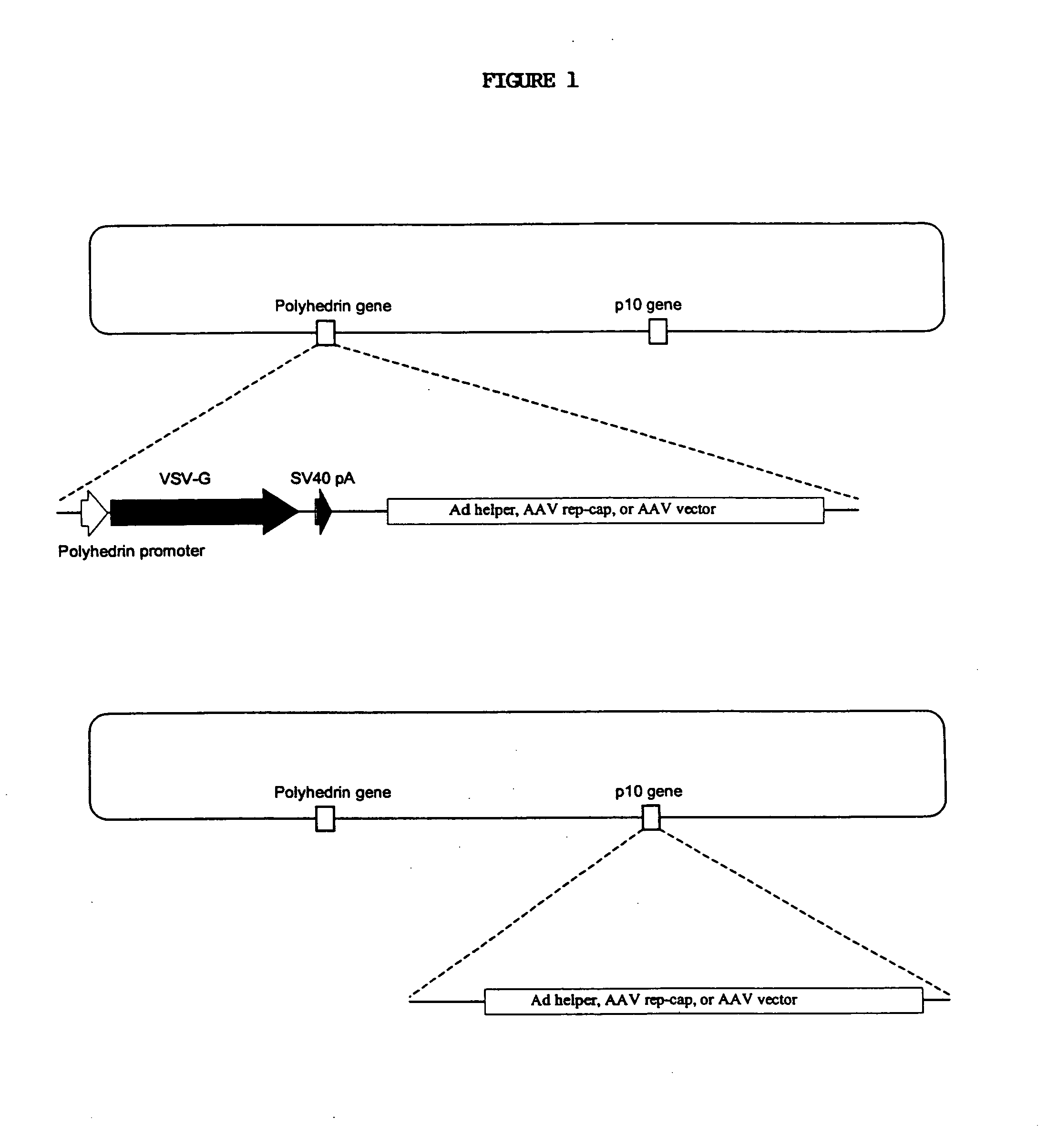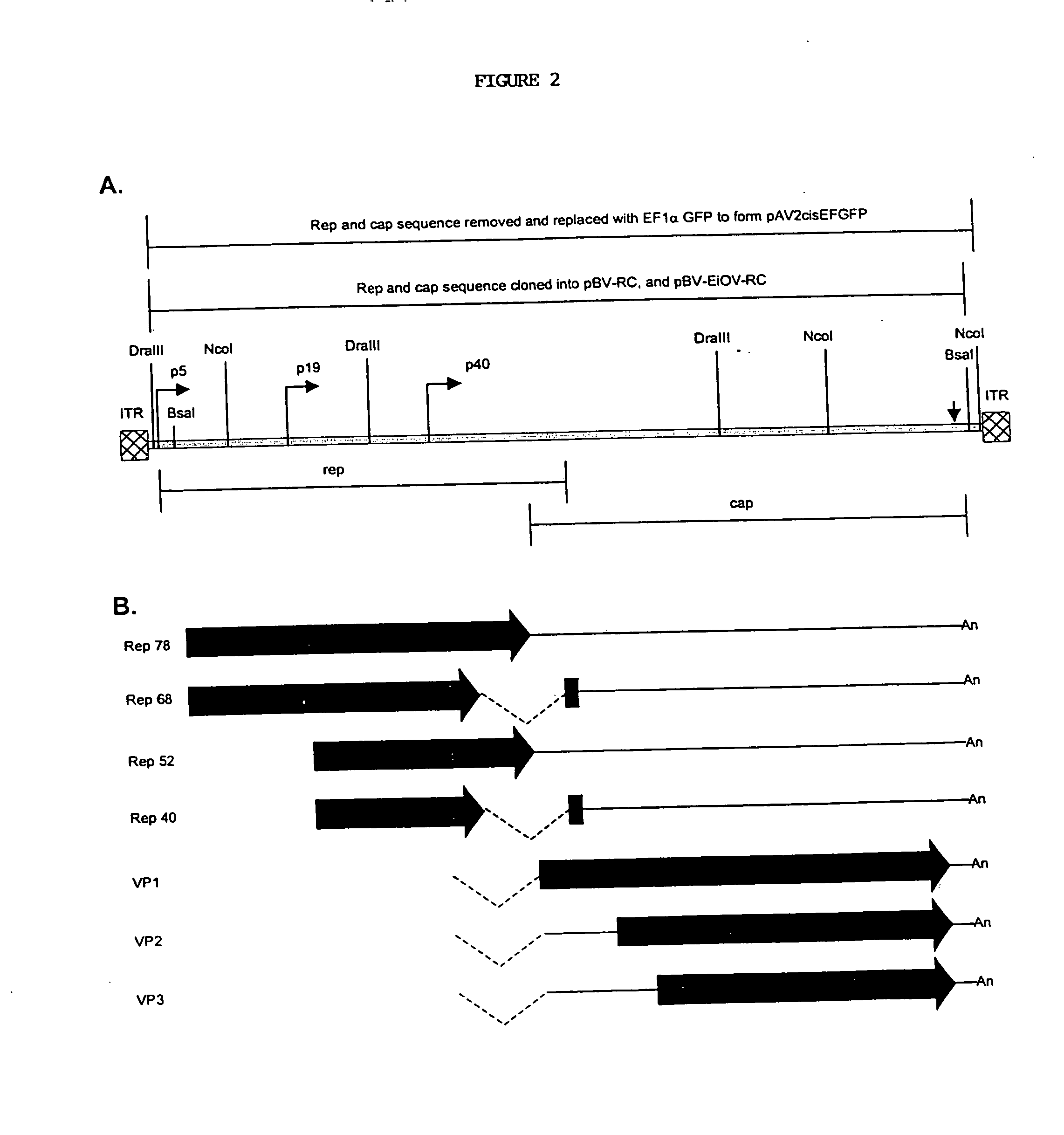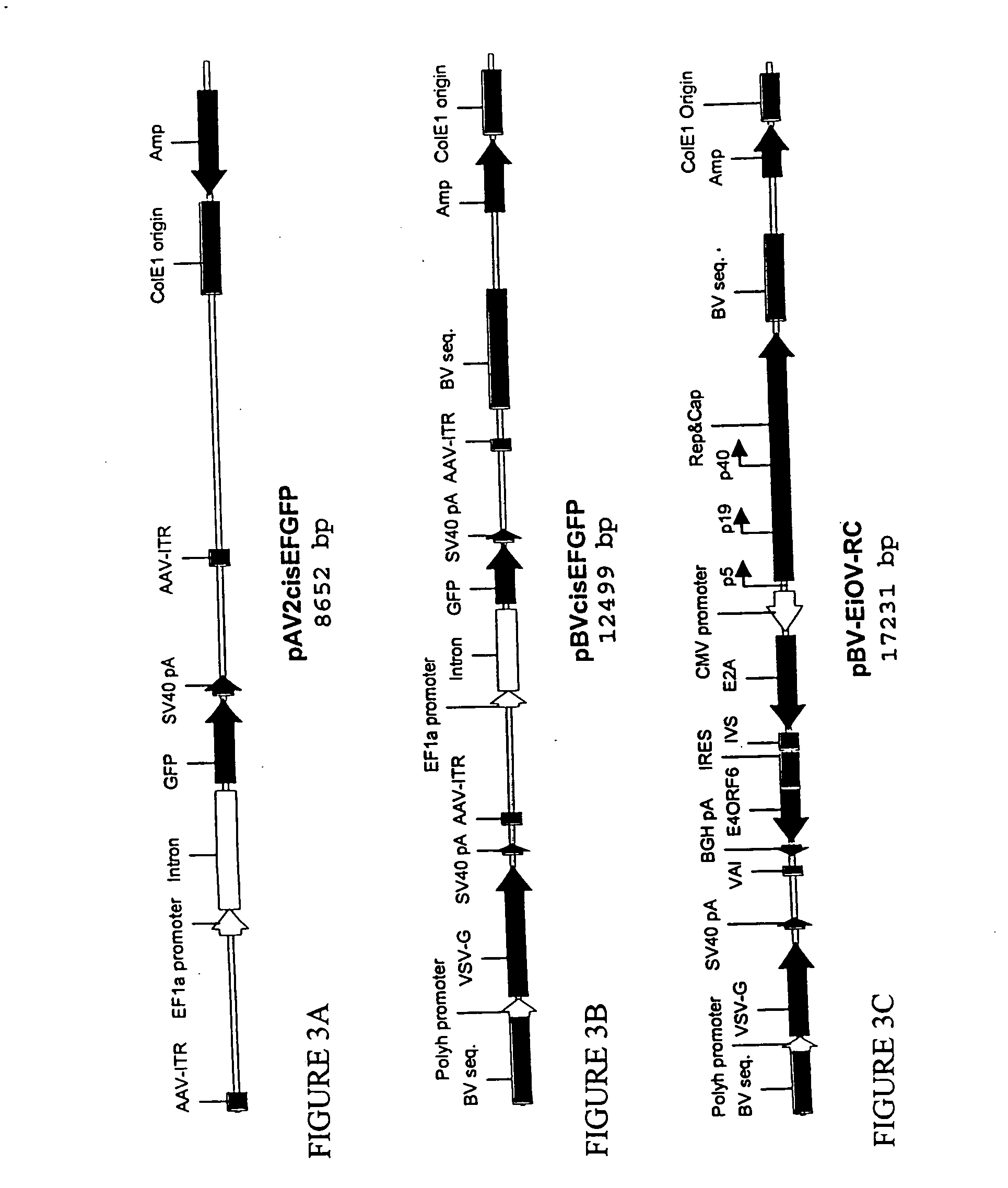Novel compositions and methods for production of recombinant virus
a technology of recombinant virus and composition, which is applied in the direction of viruses/bacteriophages, dsdna viruses, biochemistry apparatus and processes, etc., can solve the problems of insufficient production of endogenous genes, inability to synthesize insulin, and contamination of recombinant virus stocks with wild-type or modified viruses, etc., to achieve easy industrial production scale and high titer
- Summary
- Abstract
- Description
- Claims
- Application Information
AI Technical Summary
Benefits of technology
Problems solved by technology
Method used
Image
Examples
example 1
Cell Line Maintenance and Virus Propagation
[0171] The human embryonic kidney cell line 293 (ATCC CRL 1573) was maintained in Dulbecco's Modification of Eagle's Medium (DMEM; GIBCO BRL) supplemented with 10% FBS (Hyclone) and 50 μg of penicillin, 50 μg of streptomycin, and 10 μg of neomycin / ml (GIBCO BRL). Insect cell line IPLB-Sf21 (CLONTECH Laboratories, Inc.) was maintained in SF900-II medium (GIBCO BRL) supplemented with 10% FBS and 50 μg of penicillin, 50 μg of streptomycin, and 10 μg of neomycin / ml. Human adenovirus type 5 (ATCC VR-5) w as propagated on 293 cells and purified through CsCl gradient centrifugation (Jones and Shenk, 1978).
example 2
Recombinant Plasmid Construction
[0172] Standard DNA recombinant techniques were employed to create recombinant plasmids (Sambrook et al, 1989). The Rep and Cap sequence of pAV2 (ATCC 37216) between the DraI site upstream of the p5 promoter and the NcoI site downstream of the polyadenylation signal was removed. The Rep and Cap sequence was replaced through multiple cloning steps with a cassette containing GFP under the control of elongation factor 1 alpha (EF1α) promoter to create pAV2cisEFGFP (FIG. 2). The entire cassette containing both AAV ITRs and the GFP gene was then cloned into the SpeI and BgIII sites of BV-CZPG (baculovirus shuttle piasmid with VSV-G gene under control of polyhedrin promoter; kindly provided by Dr. Jim Barsoum of Biogen, Inc.) through multiple cloning steps to obtain pBV-cisEFGFP (FIG. 3).
[0173] Adenovirus helper genes E2A, E40RF6, and VAI were subcloned from Ad5 DNA. Briefly, E40RF6 was first inserted into the SmaI and XbaI sites of pIRES1neo (CLONTECH La...
example 3
Transfection of 293 Cells and Selection for 293-CG3 Stable Cell Line
[0176] 293 cells were grown to ˜70% confluency in 6-cm dia. tissue culture dishes and co-transfected overnight with 1 μg pIRESlneo and 10 μg pAV2cisEFGFP by the calcium phosphate transfection method (Sambrook et al., 1989). Cells were fed with fresh medium containing 10% FBS and cultured for 24 hours. Following trypsinization, cells were seeded at a 1:20 dilution in fresh medium containing 10% FBS. After incubation for another 24 hours, fresh medium containing 1,250 μg / ml of G418 (GIBCO BRL) was added to the cell monolayer to select for G418-resistant cells. The medium containing G418 was replaced every 3-4 days until most of the original G418-resistant cell colonies had formed. A total of fifty colonies were picked, six of which demonstrated constitutive GFP expression. These six clones were expanded in the presence of G418 and tested for their ability to rescue functional rAAV by transfection with plasmid pBV-EiO...
PUM
| Property | Measurement | Unit |
|---|---|---|
| diameter | aaaaa | aaaaa |
| volume | aaaaa | aaaaa |
| pH | aaaaa | aaaaa |
Abstract
Description
Claims
Application Information
 Login to View More
Login to View More - R&D
- Intellectual Property
- Life Sciences
- Materials
- Tech Scout
- Unparalleled Data Quality
- Higher Quality Content
- 60% Fewer Hallucinations
Browse by: Latest US Patents, China's latest patents, Technical Efficacy Thesaurus, Application Domain, Technology Topic, Popular Technical Reports.
© 2025 PatSnap. All rights reserved.Legal|Privacy policy|Modern Slavery Act Transparency Statement|Sitemap|About US| Contact US: help@patsnap.com



